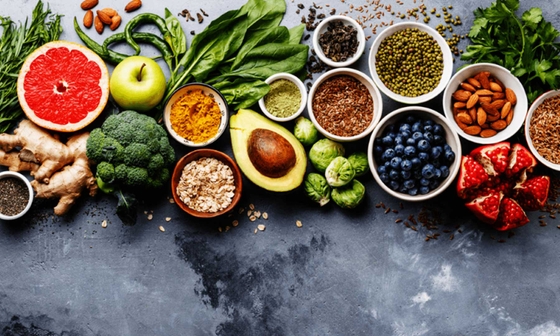
Protein and heart health
Key takeaways
- Protein foods impact your risk of heart disease in different ways.
- Legumes (e.g. chickpeas, beans, and lentils), tofu, nuts, seeds, fish and seafood are the most beneficial sources of protein.
- Eggs and poultry have a neutral effect on heart disease risk.
- Limit red meat to less than 1-3 meals (or 350g) a week.
- Processed meat can increase your risk of heart disease and should be avoided.
Discover the best sources of protein for heart health
Why is protein important for heart health?
Protein is important for building and repairing muscles and bones, providing energy, and supporting over health, including your heart. Choosing a variety of proteins, from plant-based and animal sources, as part of a heart-healthy eating pattern can help lower your risk of heart disease.
Not all protein sources affect heart health the same way. The best choices for your heart include plant-based proteins like legumes (beans, chickpeas, lentils), tofu, nuts and seeds, as well as fish and seafood. Legumes, nuts and seeds provide fibre, healthy fats, and essential nutrients, and linked with a lower risk of heart disease.1-3 Fish and seafood are a good source of omega-3 fats, which have been shown to help protect against heart disease when eaten regularly.4
Poultry, like chicken, and eggs have a neutral effect on heart health, meaning they don’t increase or decrease risk. However, the recommendation for eggs differs for people with high cholesterol, diabetes, or existing heart disease.
Lean red meat is a good source of protein and important minerals such as iron and zinc BUT should be eaten in moderation . Eating higher amounts of red meat has been linked to increased risk of heart disease. Processed meats like bacon, sausages, salami are not part of a heart-healthy eating pattern and should be avoided. Swapping some of red and processed m eat choices to plant-based proteins, like beans and legumes, can significantly reduce the risk of heart disease and related conditions. 5
How much should you be eating?
- Prioritise proteins like legumes, tofu, nuts and seeds, and fish and seafood:
- Eat mostly legumes (like beans, lentils and chickpeas), tofu, nuts and seeds, as well as fish and seafood.
- Aim to eat fish and seafood 2-3 times a week (150g per portion, or about the size of your whole hand)
- A closed fist is handy guide for a portion of legumes.
- A small handful is a typical portion of nuts and seeds
- Include smaller amounts of lean poultry (like chicken) and eggs
- If you have high cholesterol, type 2 diabetes or existing heart disease, eat no more than 7 eggs per week
- Limit red meat
- Limit to 1-3 times per week (max 350g a week).
- Choose lean cuts and trim visible fat before cooking.
- A palm size is a good guide for a portion of meat

How to eat more heart-healthy proteins
Small changes can make a big difference. Here are our top tips to make heart-healthy proteins a part of everyday.
Boost your meals with legumes
Legumes come in many forms including dried (uncooked), tinned, frozen or ground into flour. When buying tinned legumes, choose no added salt or reduced salt varieties.
Here are some ways to include more legumes in your diet:
- Add them to soups, casseroles, and salads
- Try roasted chickpeas for a crunchy protein-packed snack
- Serve hummus with vegetable sticks for protein and extra veggies in your day
- Replace some or all the meat in dishes like bolognese sauce, curries, stir fries or burger patties with lentils, chickpeas or beans.
Go nuts for nuts and seeds
Regularly eating unsalted nuts and seeds as part of a heart-healthy eating pattern can help lower total and LDL-cholesterol (bad cholesterol), and your risk of heart disease. Try these tasty ideas:
- Add nuts and seeds into stir fries or pasta dishes. Cashews, peanuts and sesame seeds are great additions to stir fries and pine nuts and walnuts go well with pasta dishes.
- Toss almonds, walnuts or sunflower seeds into salads for some extra crunch and flavour.
- Sprinkle chopped nuts or seeds on porridge, cereal or yoghurt.
- Enjoy a handful of plain, unsalted nuts as a simple snack.
- Swap butter for peanut
Make fish and seafood a staple
Frozen or tinned seafood can be a cheaper and more convenient alternative to fresh. When buying tinned fish, be mindful of salt and other ingredients in flavoured varieties or choose unflavoured options.
- Use tinned tuna or salmon in sandwiches, salads or pasta dishes.
- Enjoy baked or steamed fish parcels as a delicious and simple dinner option.
- Add frozen seafood marinara mixes to stir-fries and pasta dishes.
- Use different herbs and spices like dill, parsley, coriander, lemongrass, ginger, garlic, lemon or paprika to flavour fish and seafood.
Swap processed meats for heart-healthy alternatives
Processed meats like ham, bacon, and sausages aren’t a part of a heart-healthy eating pattern. Try these delicious swaps instead:
- Use roast chicken, tinned tuna, or eggs instead of ham or other processed meats in sandwiches and salads.
- Enjoy falafels, homemade veggie or meat patties as an alternative to sausages in wraps and burgers.
Looking for more information on the science behind our recommendations?
We understand there is a lot of nutrition misinformation, and it’s important to find information from credible and trustworthy places. The Heart Foundation’s Heart Healthy Eating Pattern recommendations, and associated resources, are backed by the latest science and made with the unique needs of Australians in mind.
Curious about the evidence that informs our recommendations? Read more about our evidence reviews and position statements.
More healthy eating tools and resources
- We have plenty of resources to help you follow a heart-healthy eating pattern.
- Build your skills and confidence in the kitchen with our tips and tools for planning, shopping, and cooking healthy meals.
- Explore our full range of recipes for delicious, budget-friendly and easy to prepare heart-healthy meals you can make at home.
- Discover our collection of free recipe e-books, from ‘Family recipes on a budget’ to '5 Ingredient Recipes' plus many more.
- Get four weeks of easy-to-follow dinner recipes, shopping lists, tips and other helpful information to make healthy eating easy with our free Heart-Healthy Dinner Plans.
- Looking for more information? Explore our resources on healthy eating and recent articles.
References
- Aune et al (2016) Nut consumption and risk of cardiovascular disease, total cancer, all-cause and cause-specific mortality: a systematic review and dose-response meta-analysis of prospective studies
- BMC Med. 14(1):207 50. Afshin et al (2016) Consumption of nuts and legumes and risk of incident ischemic heart disease, stroke, and diabetes: a systematic review and meta-analysis. Am J Clin Nutr. 100(1):278-88; 51
- Luo C et al (2014) Nut consumption and risk of type 2 diabetes, cardiovascular disease, and all-cause mortality: a systematic review and meta-analysis. Am J Clin Nutr;100(1):256-69
- Ricci H et al (2023) Fish Intake in Relation to Fatal and Non-Fatal Cardiovascular Risk: A Systematic Review and Meta-Analysis of Cohort Studies. Nutrients; 15(21).
- Naghshi S et al (2020) Dietary intake of total, animal, and plant proteins and risk of all cause, cardiovascular, and cancer mortality: systematic review and dose-response meta-analysis of prospective cohort studies. Bmj;370:m2412.
You might also be interested in...

Build your healthy eating skills
We’re here to help with our tips and tools to help you plan, shop and cook heart-healthy meals.

9 food and heart health myths, busted
Let’s dive into nine common food and health myths and the facts behind them.

How to follow a heart healthy eating pattern
Follow these easy tips to boost your heart health and embrace a heart-healthy eating pattern.
Last updated13 May 2025
Last reviewed27 August 2024